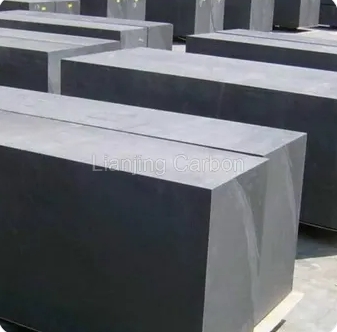What is high-density graphite block?
High bulk density graphite block refers to block high-purity graphite, and high-density graphite is also called molded graphite. The specifications and physical and chemical indicators of the above products can be customized.
High bulk density graphite block adopts advanced vibration forming process, after roasting or secondary roasting and graphitization process, the internal and external structure of the product is uniform. The products are widely used and can be used in mold processing, chemical heat exchanger processing, lithium battery cathode material preparation and so on. The production cycle of the product is 95 days.
Characteristics of high-density graphite blocks
The performance of high-density graphite blocks is relatively excellent. High-purity graphite, a material, has made an indelible contribution to the development of the chemical industry.
1. Corrosion resistance
2. High temperature resistance, the melting point of graphite is 3850 degrees, and the boiling point is 4200 degrees
3. High strength, flexural strength: 30Mpa, compressive strength: 55Mpa, with the increase of temperature, the graphite strength increases.
4. Antioxidant
5. Strong corrosiveness to acid and alkali solutions
6. Wear-resistant
7. Good electrical conductivity and thermal efficiency
8. Excellent chemical stability
9. Small thermal expansion coefficient
10. High bulk density graphite block is easy to clean.
Application of high quality graphite blocks
(1) Pressure sintering of diamond tools
(2) Mould
(3) Continuous casting molds of aluminum, copper and brass
(4) Degassing rod
(5) Crucible and sealing rod
(6) Semiconductor applications
(7) Application of solar energy technology
(8) EDM application
Our company is a professional carbon products supplier, we provide customized high bulk density graphite block in different sizes.

评论
发表评论